Taxonomy: Tremarctos ornatus: This species was originally identified as Ursus ornatus [F.G. Cuvier, 1825], with the type specimen attributed to Chile (although there is no evidence of this species ever occurring there). [See separate page: Discovering and Naming Bear Species for Science.] The genus was changed when it was realized that this species stemmed from a line of Tremarctine bears, which once occupied both North and South America. These are commonly called short-faced bears, although it has been shown that the seemingly short face compared to Ursine bears is an optical illusion. Its closest living relative is the Florida cave bear (Tremarctos floridanus), which went extinct about 8,000 years ago (about 4,000 years after the end of the Pleistocene); it was the last known species of bear (anywhere in the world) to go extinct. Remains of that species have been found in Central America, but not South America. Tremarctos ornatus is known only from South America, with the oldest remains dated at about 7,000 years old.
The species name of the Andean bear is in reference to the ornate markings often occurring on its face and chest. Light-colored markings encircling the eyes of some individuals may look like eye-glasses, hence this species was called the spectacled bear. In the 1990s, the common name gradually changed through a concerted effort to identify the species with its home in the Andes Mountains; however, the old name is still used by some institutions, especially zoos.
Subspecies designations have been proposed due to the wide variation in facial markings and cranial size, but these have since been largely dismissed. Throughout its range this species is most widely called “oso de anteojos” or “oso andino” in Spanish and “ukumari”, “ucu” or “juco” in Quechua, but with many other local names: “bü”, “chayú”, “huy”, “isnachi”, “jez”, “maini”, “manoa”, “manoba”, “mapa”, “mashiramo”, “nem”, “oncomari”, “oso frontino”, “sabaidakú”, “siua”, “uí hui”, “uio”, “uix”, “utut”, and “wii”. The diversity of local names across location and language may reflect that diverse cultures have perceived this bear as a notable part of their environment. Local people sometimes identify two types of this species based on size, appearance and perceived behavior.
Distinctive characteristics: This is a medium-sized bear with sexual dimorphism such that adult females are about two-thirds the size of adult males. Body size at maturity varies with food availability. The density of pelage may vary with local climate but it is moderately short and dark, gaining a slightly red tint after long exposure to the sun. It typically, but not always, has variable light-colored markings on face, throat, and chest. It is not yet known whether these markings vary consistently between genetic clades or populations, but the markings are completely absent in some populations.
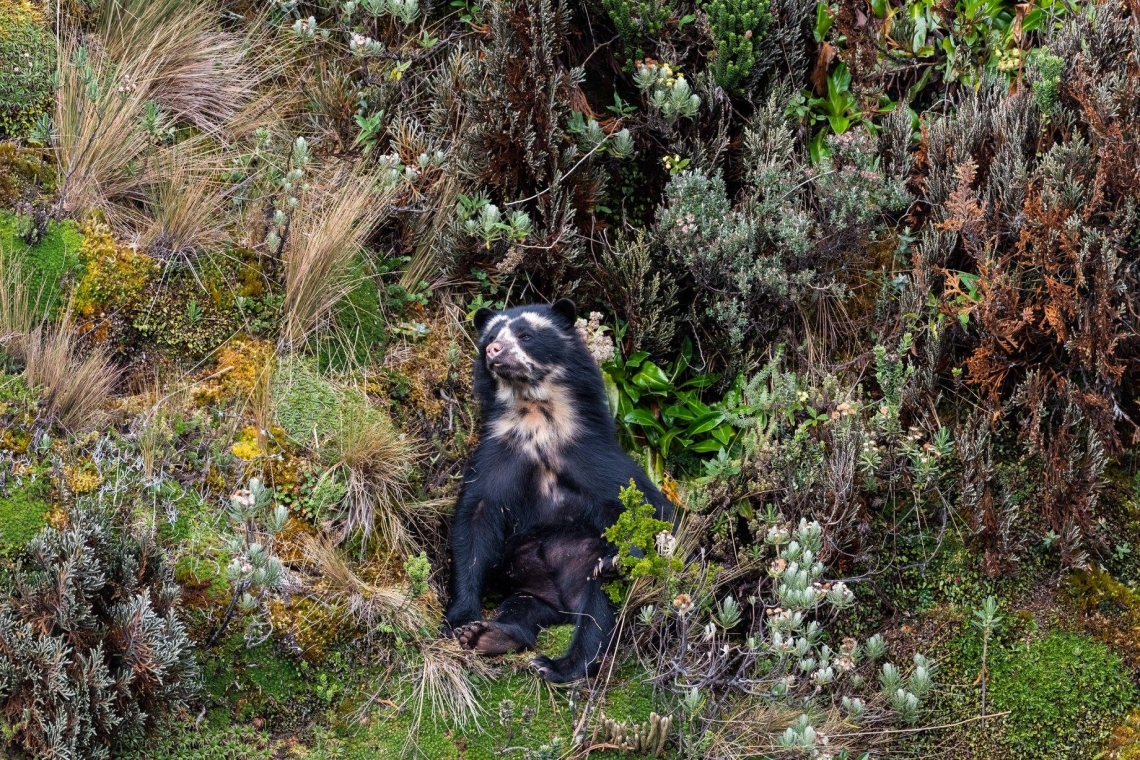
Andean bear_T ornatus_Cayambe Coca National Park Ecuador_adult bear with ornate markings_Sean Kite
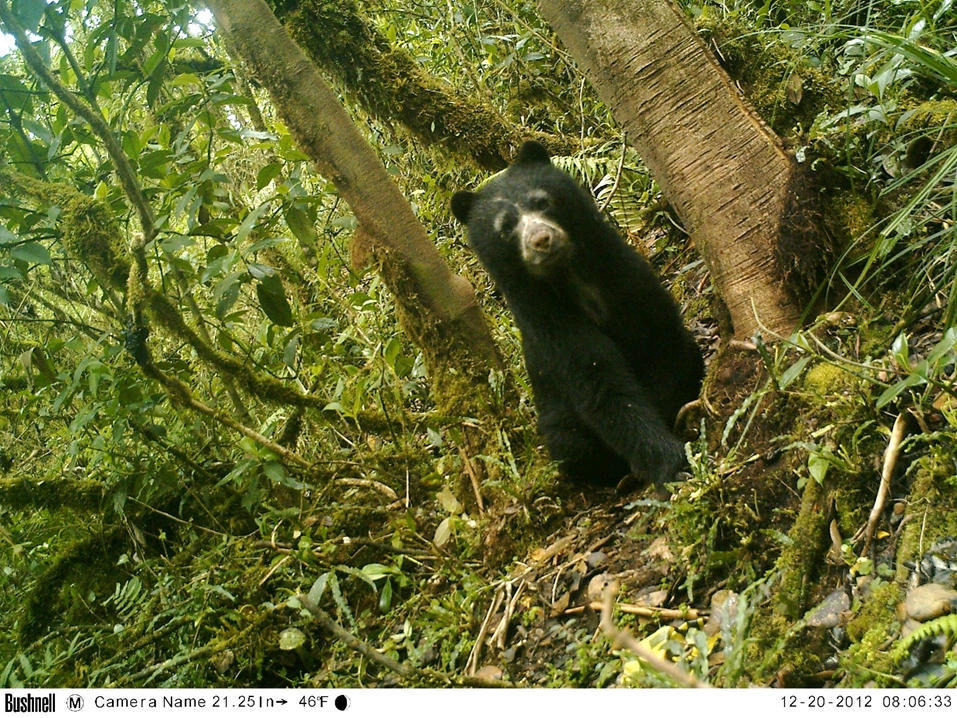
Andean bear_T ornatus_Colombia_black face bear_Fundaciòn Wii-Nexen-Corpoguavio-Colombia
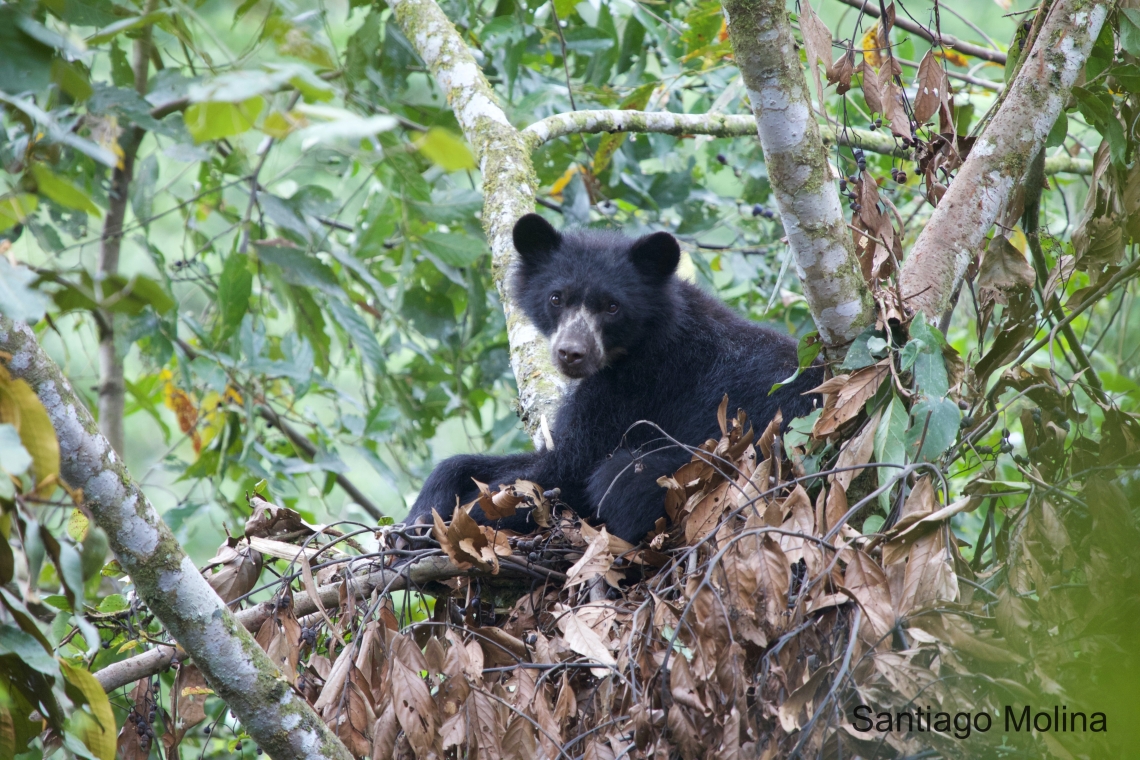
Andean bear_T ornatus_Ecuador_adult female without spectacles_Santiago Molina
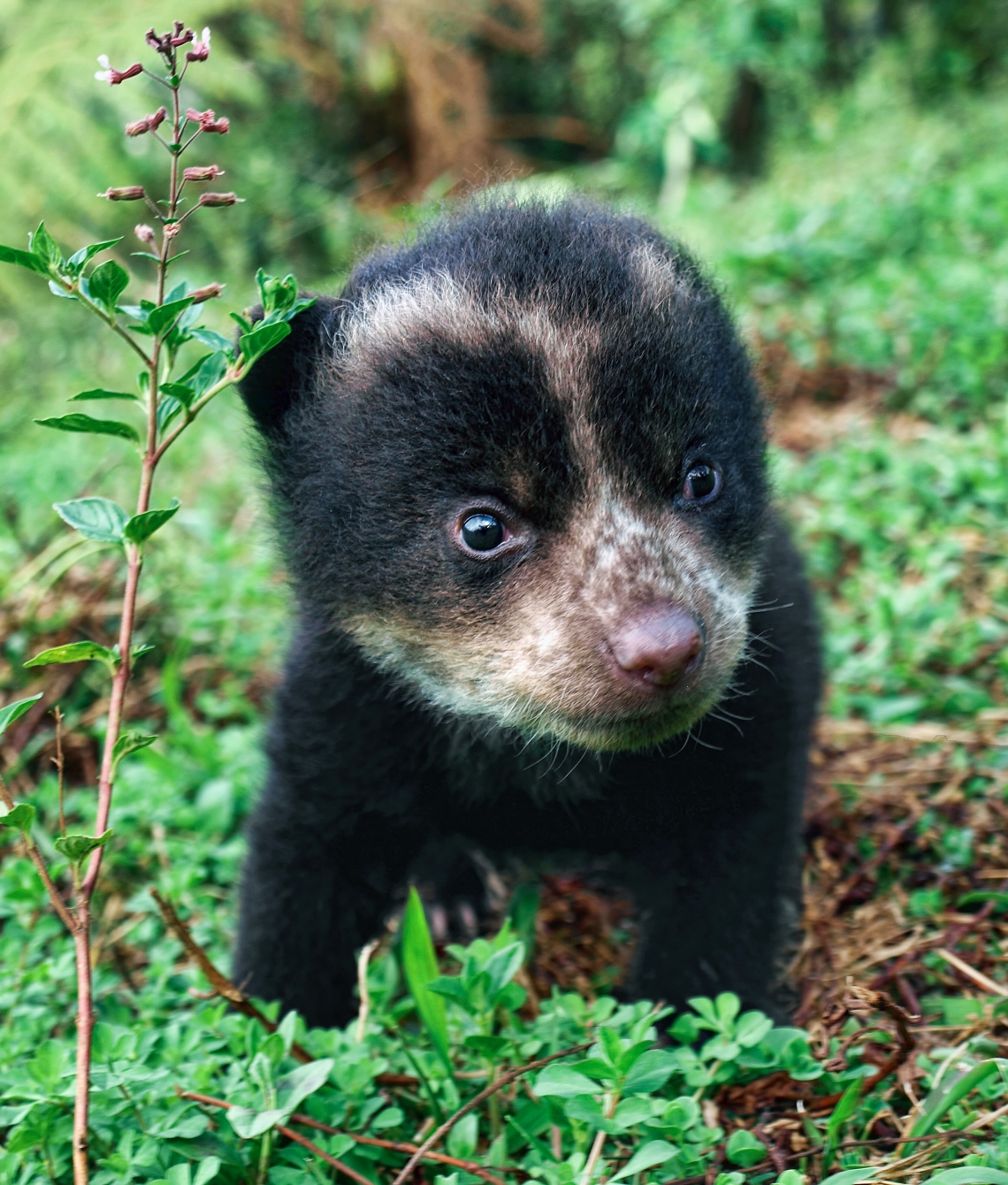
Andean bear_T ornatus_Ecuador_ bear cub with distinct markings_Alandy Torres
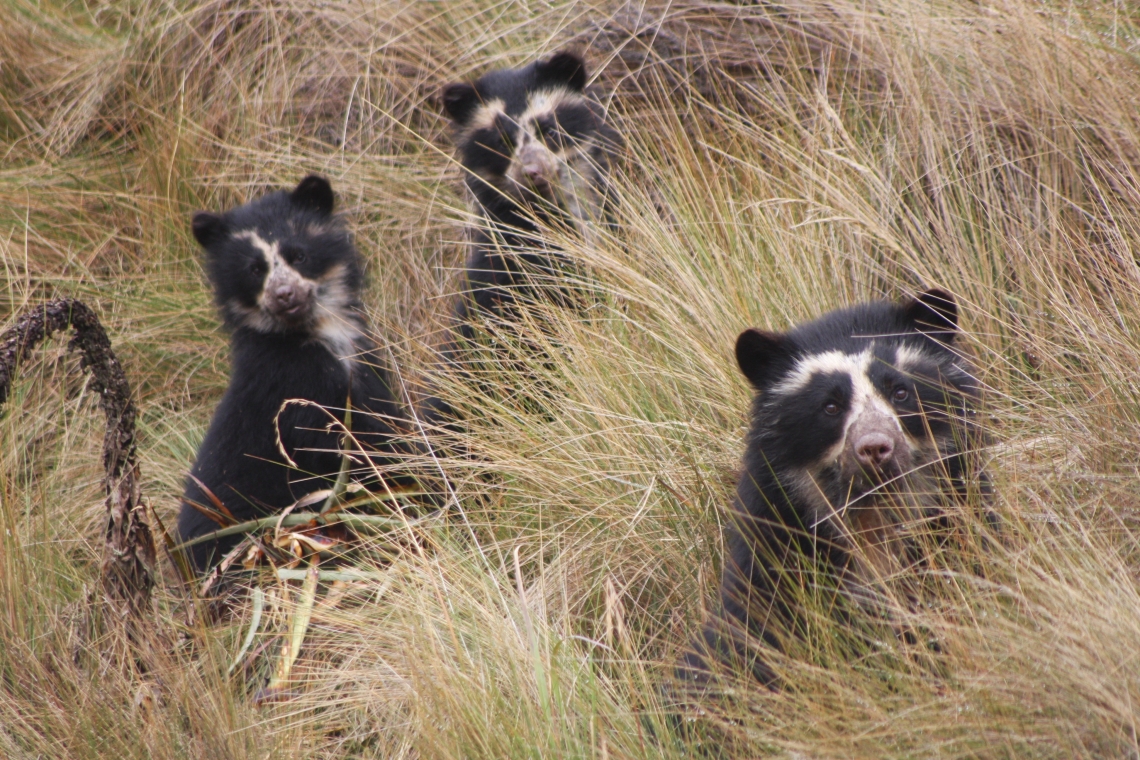
Andean bear_T ornatus_Cayambe Coca National Park Ecuador_ bear family with individual facial markings_Victor Quinchimbla
Distinctive behaviors: This species is solitary except during the mating season. They communicate via scent marking, often by rubbing on trees, especially trees along well-used trails. They are mainly diurnal, with activity peaks in early morning and late evening.
This species is an excellent tree climber. It often feeds in trees and may create a nest for resting. These tree nests are especially common near where they feed on crops or kill cattle, apparently as a safety mechanism from human threats. They have even been known to drag parts of cattle into the tree nest so they can safely consume it. Although they readily kill cattle, they are rarely aggressive toward people.
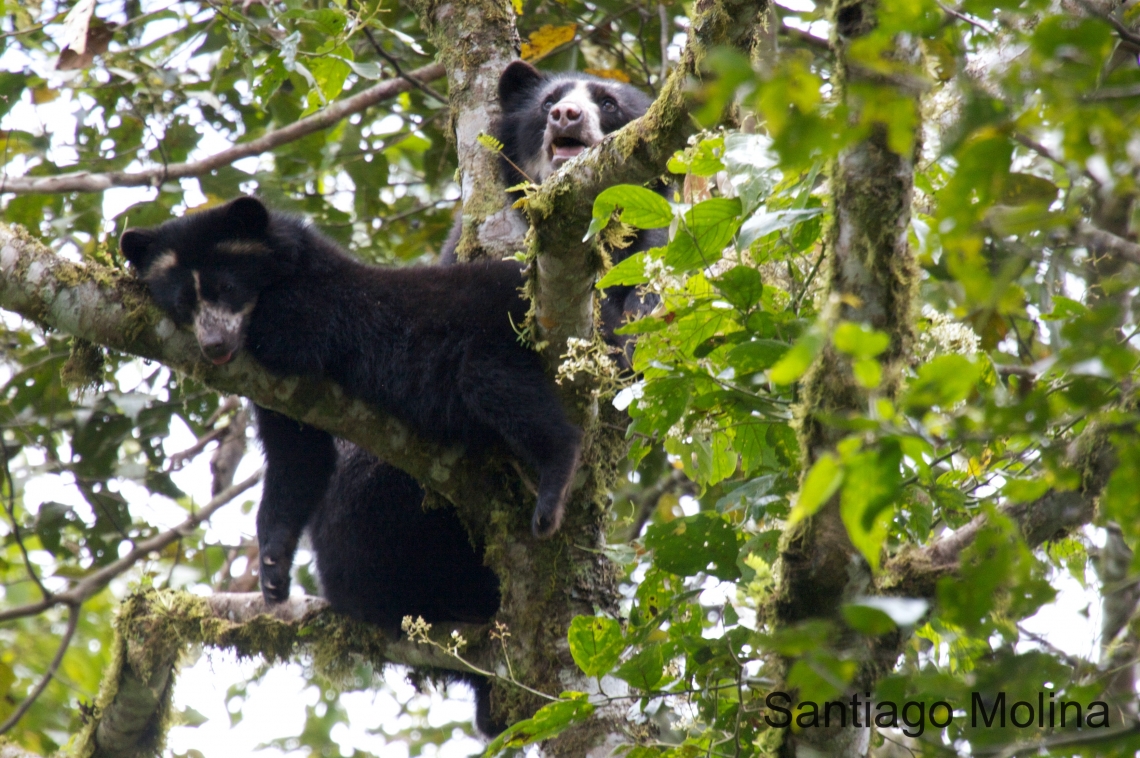
Andean bear_T ornatus_Maquipucuna Ecuador_female with cub resting in tree_Santiago Molina
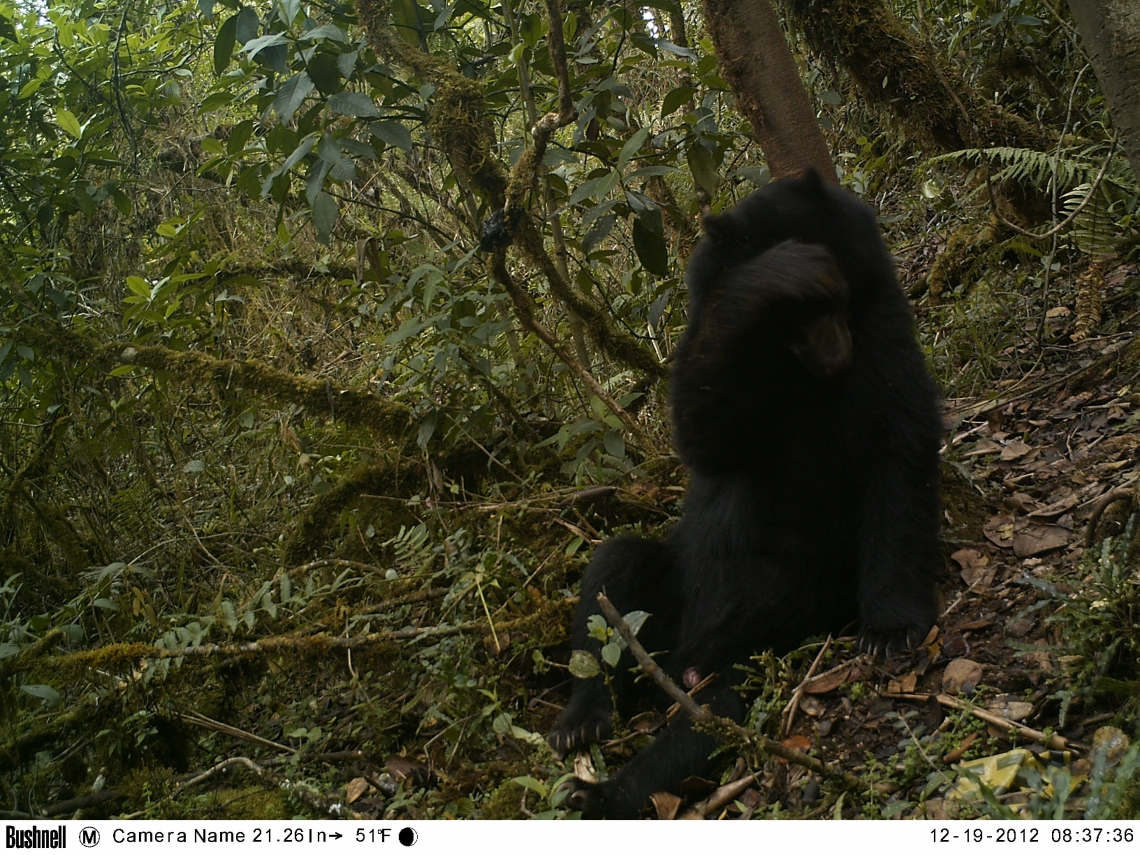
Andean bear_T ornatus_Colombia_adult marking behavior_Fundaciòn Wii-Nexen-Corpoguavio-Colombia_1
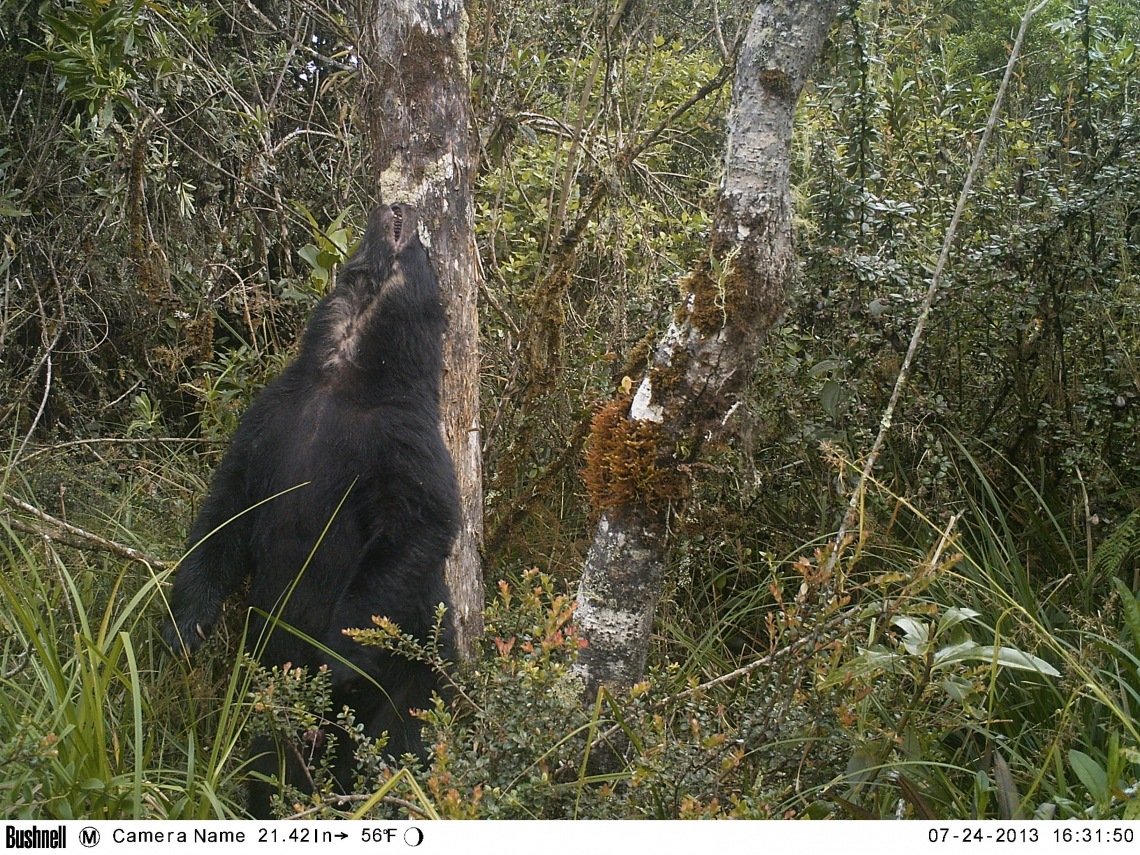
Andean bear_T ornatus_Colombia_adult marking on tree_Fundaciòn Wii-Nexen-Corpoguavio-Colombia_2
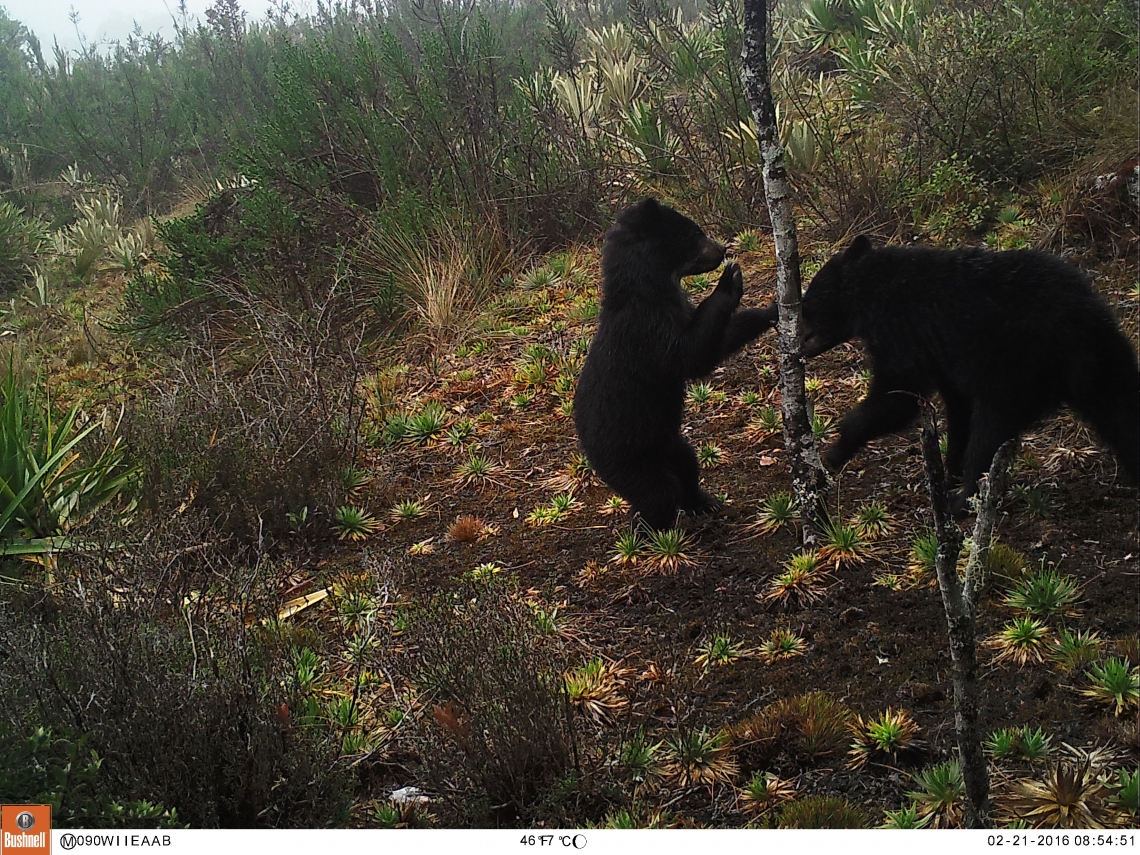
Andean bear_T ornatus_Colombia_female with cub sniffing marked tree_Fundación Wii-Empresa de Acueducto de Bogota-Colombia_1
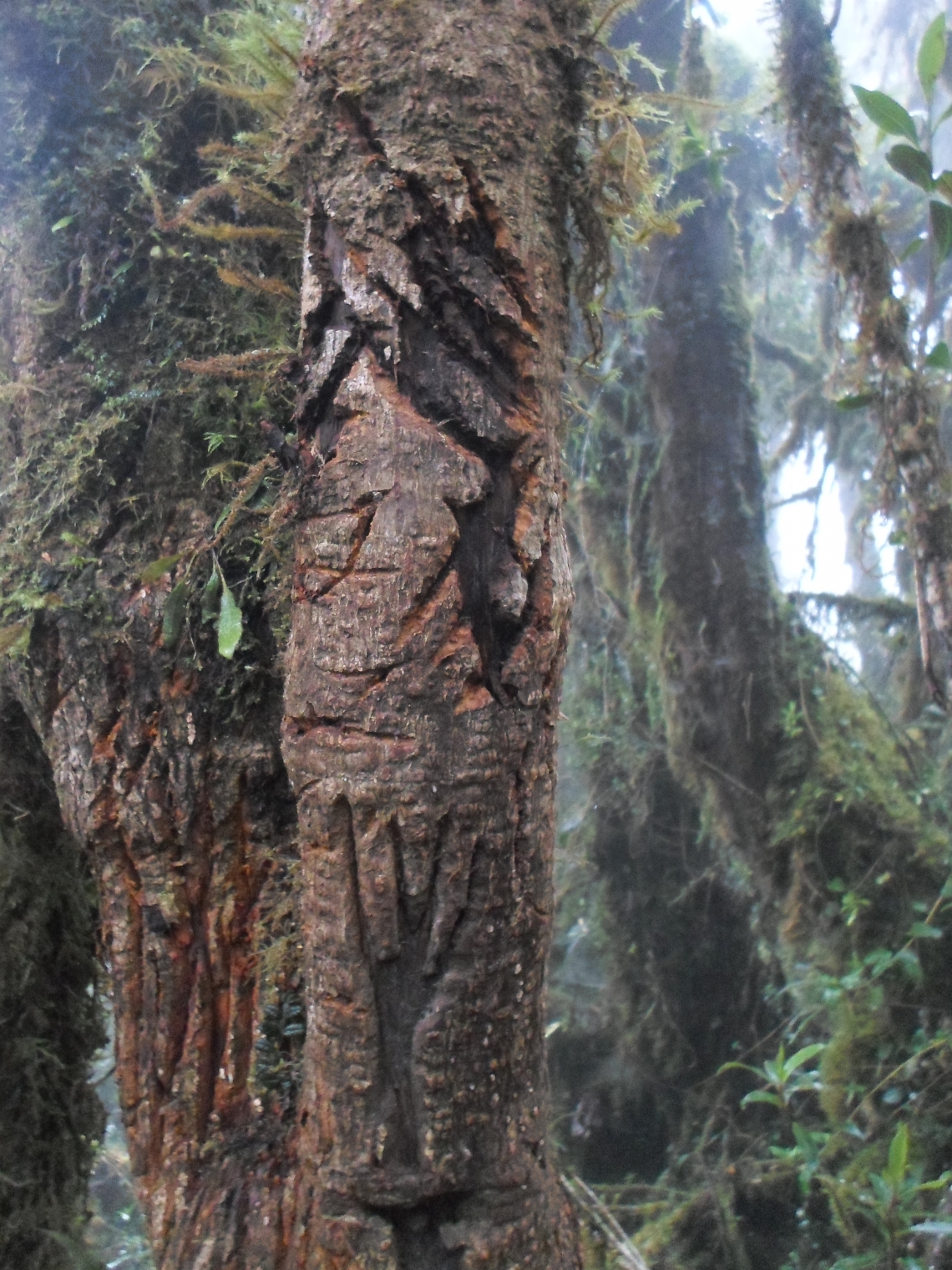
Andean bear_T ornatus_Colombia_marked tree_Fundación Wii-Empresa de Acueducto de Bogotá-Colombia
Andean bear_T ornatus_Junin Colombia_video female marking tree_Fundaciòn Wii-Nexen-Corpoguavio-Colombia
Andean bear_T ornatus_Colombia_video stung by bees_Fundación Wii-Nexen-Corpoguavio-Colombia